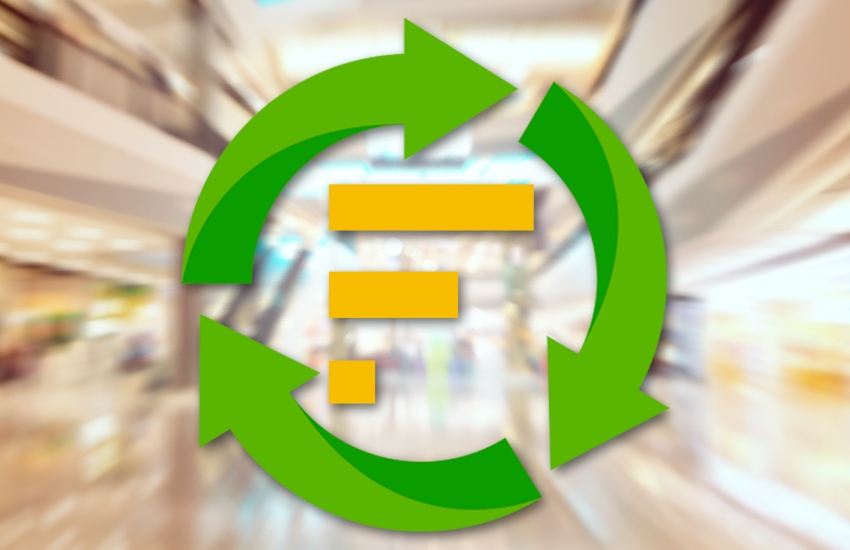Retail’s Path Forward is Circular & Sustainable
Implementing sustainable solutions now will pay off in the long run for retailers. Discover 3 ways retailers can begin their journey to a circular, sustainable economy here.

61% of Americans say that sustainability plays a valuable part when it comes to evaluating purchase decisions. They also rank sustainable packaging and products as most important when buying ethically. Additionally, one-third of consumers will pay a premium for sustainable products.
Therefore, retailers can and should add sustainability initiatives because it will grab the attention of environmentally-minded consumers. And for retailers, implementing sustainability means a growing focus on creating a circular economy.
What is a Circular Economy?
When discussing a circular economy in the retail industry, it’s referring to operating your business with the intention to minimize waste and maximize use of resources. Basically, it puts the focus on sustainability, keeping products and product packaging out of landfills and in circulation by recycling, reusing, reselling, etc.
While the idea is beginning to take off, there’s still a lot of room for improvement. The International Institute for Sustainable Development found that only 9.1% of the world’s economy is circular. However, retailers need to understand that investing in circularity will pay off in the long run. The estimated revenue generated from circular economy transactions was $388 billion in 2022, with an expected growth of nearly double (to $712 billion) in 2026. Therefore, it behooves retailers to get their circular economy up and running to take advantage of consumers’ penchant for sustainable shopping.
3 Stops on the Path to Circularity & Sustainability
While the benefits of implementing a circular economy are pretty obvious – less waste, reduced costs, less environmental impact, improved reputation – the path to creating a circular and sustainable operation is a little more difficult.
To venture into circularity and sustainability, retailers have to step outside of the traditional, linear approach to logistics and supply chain. Here are a few initiatives retailers can implement to start their circular evolution.
Implement new technology. For a circular approach to retail to be effective, data must drive every step. Data will help retailers learn what products the customer is buying, where they are purchasing from, the preferred method of delivery, and so much more. This knowledge helps provide a plan, while additional technology will help provide visibility throughout the supply chain, which also helps improve circularity and sustainability.
A great way to get this data is for retailers to partner with a tech-enabled logistics provider. A logistics provider will be able to provide visibility throughout the supply chain thanks to integrated technology with every cog in the chain. A tech-enabled logistics provider will be able to provide track and trace visibility from order to delivery and/or return. They can also optimize routes and provide aggregation and order consolidation as well as utilize a network of delivery partners that are experts at efficiently moving products.
Improve reverse logistics. Consumers returned more than $816 billion worth of retail merchandise in 2022, according to the National Retail Federation, and that number is only expected to grow as consumer shopping habits change. Therefore, keeping returned products out of landfills must be a priority for retailers going forward. They can do this by improving their reverse logistics practices.
By working with an expert in reverse logistics, like Fillogic, retailers can process returns more efficiently and profitably in the middle mile. Fillogic conducts quality checks on products and is able to push good products back to shelves for resale faster or designate it for recycling/reuse, return to vendor or, as a last resort, disposal.
Fillogic’s end-to-end logistics services guarantee product returns will be available for resale in 3 days or less, reducing stocking/transit/processing costs and increasing resale opportunities. It also lowers retailers’ carbon footprint by keeping products out of landfills and reducing the amount of miles products travel. In 2022, Fillogic kept 18 tons of materials out of landfills and 65 million tons of carbon emissions out of the air, according to the new 2022 Impact Report released by Closed Loop Partners.
Start packaging/recycling programs. Many retailers are looking for more sustainable packaging options, including using biodegradable or plant-based materials, reducing the amount of packaging, and recycling and reusing materials.
Additionally, some retailers are encouraging customers to return products to the stores for recycling instead of throwing the material away.
For example, Patagonia will accept their products back when they’ve reached the end of usability and the company will then recycle or repurpose the items. They ensure that any material that can be upcycled or reused is and the rest are disposed of as responsibly as possible. (More information on Patagonia’s program can be found here.)
Creating a Sustainable Future
The retail industry's path forward is undeniably circular and sustainable. As consumer attitudes shift toward valuing sustainability in their purchasing decisions, retailers have a unique opportunity to capture the attention of environmentally-conscious consumers.
The statistics speak for themselves, with a majority of Americans recognizing the significance of sustainability and a substantial portion willing to pay more for eco-friendly products. Embracing sustainability initiatives not only aligns with consumer preferences but also propels retailers toward a circular economy model, where waste is minimized and resources are maximized through recycling, reusing, and responsible disposal.
Despite the current low global circular economy percentage, the promising potential is evident. The substantial revenue generated from circular economy transactions is projected to nearly double in just a few years. By implementing technological advancements, refining reverse logistics practices, and adopting packaging/recycling programs, retailers can embark on a transformative journey toward circularity and sustainability. This not only benefits their bottom line but also contributes to a healthier planet for future generations.
Start your sustainability journey; contact Fillogic today.